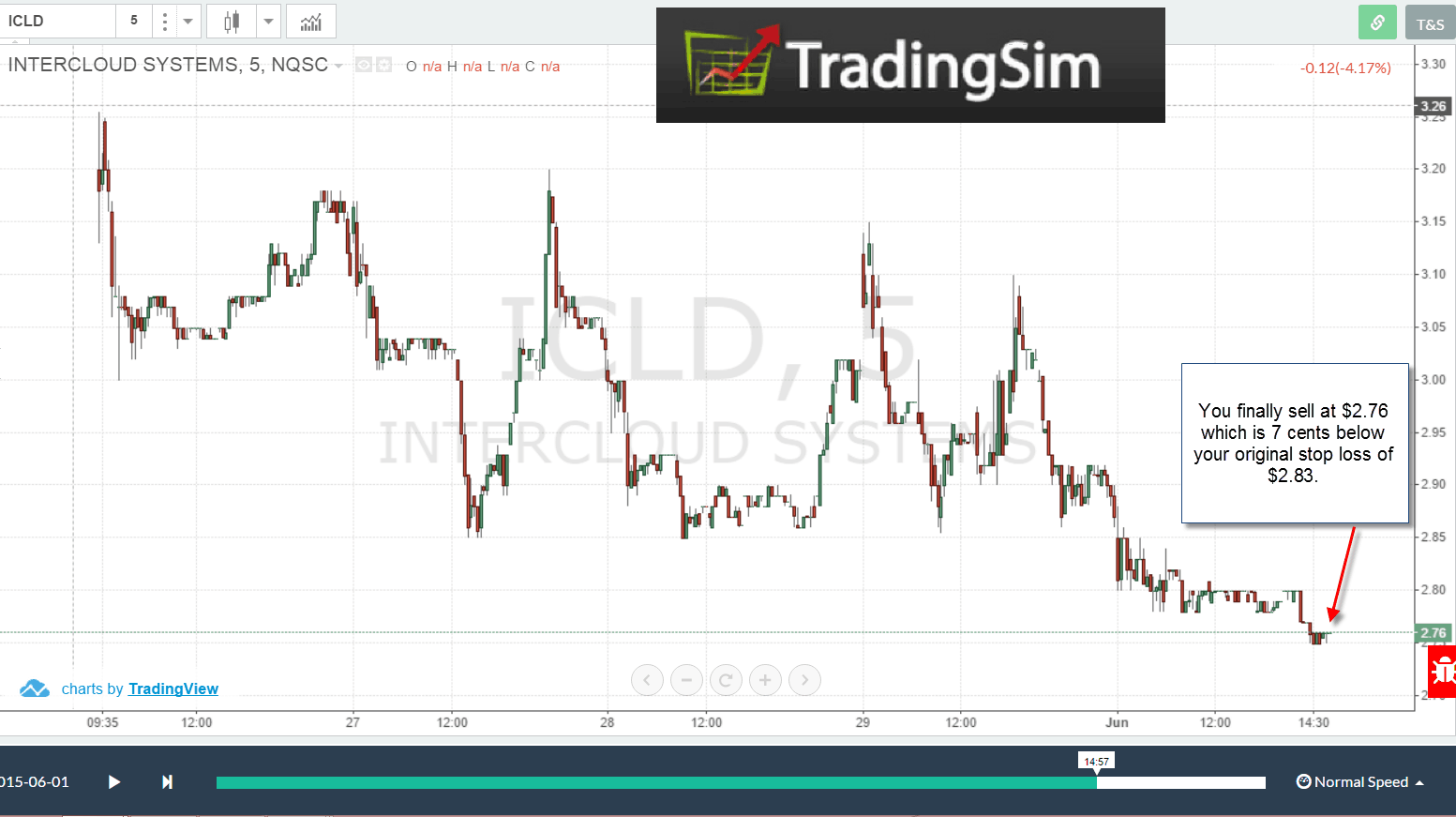Overview of Risk and Reward
Trading is not as complicated as everyone would have you to believe. Successful trading comes down to whether you can turn a profit.
Getting to the point where you can consistently land in the black will take some time. For some of you, you may never reach this point in your trading career. However, with a ton of courage, positive thinking and a sound trading system, you can beat this the greatest of all games.
Now, back to my earlier point, trading is not that hard. When you really dummy it down, the one question you have to ask yourself is if you can manage your money properly.
Forget all of the indicators, predictive analysis, automated trading systems, and high-speed fiber connections. Are you able to effectively manage your money on every trade?
To this point, being able to determine the appropriate risk reward ratio will in the end be one of the key factors if not the only factor which will determine the length and success of your trading career.
In this article, I will cover the concept of risk and reward and how essential this basic ratio is to your overall trading strategy.
When should you apply the Risk and Reward Ratio?
If you do not know the answer, then you clearly were skimming the introduction of this article.
Before we even get into the details of the risk and reward concepts, I want to make it very clear up front that this is required for every trade. Meaning, before you click buy or sell short, you must have both your profit target and stop loss exit identified.
If you are unable to or are unwilling to determine your risk and reward on each trade, STOP TRADING!
I normally do not go for the shock and awe when discussing the markets, but without knowing your risk and reward you are just setting yourself up to fail. I don’t know about you, but failure is not an option.
How to Determine the Risk and Reward Ratio
There are many complex calculations and formulas in the financial markets; however, risk reward analysis is not one of them.
Risk Reward Calculations
Profit is defined as your profit target minus your entry price.
Stop Loss is defined as your entry price minus your stop loss price.
You then take the value of the reward/risk to come up with the reward to risk ratio.
If that was not confusing enough, let’s take it to the charts to further illustrate this point.

In the above example, let’s assume you entered ICLD at $2.86. You want to place your stop beneath the recent swing low of $2.85, so you enter a stop loss order of $2.83, which is 1% beneath your entry price.
Based on previous price action, you are confident ICLD will go 4% higher from your entry price; therefore, you enter a sell order at $2.98.
Therefore, you are risking 3 cents ($2.86 – $2.83) in hopes of making 12 cents ($2.98 – $2.86). Hence, you have a 4 to 1 reward to risk ratio.
What is the Best Risk to Reward Ratio?
This question haunted me for many years. The most common ratio you hear is 1 to 3, meaning for every dollar you risk expect 3 dollars in profit.
The harsh reality of trading is that the numbers never work out this cleanly. Based on the volatility of the stock, or the amount of dollars you are using in the given trade, your ratio may differ.
What I will say is that while you may have different ratios based on the trade setup, over the aggregate of your trades, you should average somewhere between 3 to 5.
This can feel a bit high, but you have to stack the chips in your favor for long-term success.
Seems so straight forward, well let me further explore how the simple risk reward ratio perplexes even the best of traders when it comes time for execution.
Traders are Unwilling to Commit to a Profit Target
Take the ICLD example, cited in the earlier section of the article and assume you do not sell at $2.98. For whatever reason, you believe that ICLD will go higher and guess what you are right – well initially.
ICLD after a nice pop over $3 begins to retreat and ends up pulling back to under $2.98. Don’t believe me; well let’s skip forward in time using the Tradingsim time machine to check out the action.

Now that ICLD retreated to $2.91 cents if you were to sale, you would have made 5 cents while risking 3 cents. Not to make this sound horrible, because you still would have a reward to risk ratio of 1.667; however, 1.667 is not 4. This delta represents an almost 60% profit margin loss.
Take this lack of discipline to commit to sell and apply this over a random distribution of a hundred day trades. How are you able to effectively run your trading business, if you do not know what your true profit margin is on each trade, because you change the profit targets after entering a trade?
Traders are Unwilling to Commit to Stop Loss Orders
Similarly, to our previous example, but on the other side of the equation, traders also struggle with honoring their stop loss orders.
We’ve all been there, the stock is not acting appropriately and yet we hold on.
Call it greed or the need to be right, for whatever reason we know we should exit the trade but do not. To make matters worse, instead of just doing nothing and letting the stop trigger, we will either cancel the position outright or change the entry price.
You may say to yourself, well, what’s the big deal if I change the orders on a few trades?
Well, in our previous example, if we expect to have a 4 to 1 reward to risk ratio and then we lower our stop loss, we are eating into our profit margin.
Still not feeling the pain? Let’s once again take it to the charts.

ICLD ended up failing and retreating not only below your entry price, but also breached the swing low of $2.85. So, a trade where you could have had a 4% gain, resulted in a 3.5% loss.
I wanted to walk you through this example to illustrate that if you do not define the boundaries of gains and losses, you are unable to manage your money properly.
Also, imagine the emotional turmoil you will put yourself through as you go from a winning trade to a losing trade for no other reason than your inability to manage your money.
You Need to Start Thinking Like a Business
Let’s step away from trading for a minute and put the concept of risk and reward in other business terms.
Amazon just crossed the mark of becoming the largest retailer in the world surpassing Walmart. Even though Amazon is in everything from bedding to handheld devices, do you think for a second that Amazon doesn’t understand their profit margins on every item they sell?
For example, Jeff Bezos may know he is making 8 dollars on every Elsa Frozen doll sold. Now, imagine if one of the retail managers decides to sell the doll for 7 dollars less, without modifying the purchase agreement with Amazon’s supplier. Jeff would have gone from 8 dollars in profit down to 1 dollar.
Take this example and imagine if this was sort of price manipulation was done arbitrarily across the millions of products Amazon offers. Do you think Amazon would be the number one retailer in the world if they did not have discipline around profit margins?
How do you expect to make it as a trader if you don’t do the same?
Risk and Reward in terms of Dollars not Percentages
Up to this point, we’ve talked formulas and how to execute a proper risk to reward trading approach, but we have not talked in dollars.
There is one point I really want to drive home in this article and that is that you have to think in terms of dollars. Now, if you are a trader that uses the same amount of money on every trade, then you can skip this section of the article and feel free to browse one of our related posts.
However, if you are a type of trader that adjusts the amount of dollars used based on the volatility of the stock or key support/resistance levels and things become a bit more complicated.
Let’s say you average a 3 to 1 reward to risk ratio, but you use varying amounts of money on each trade. This figure may shift more dramatically with day traders, as they are able to closely monitor price movement intraday.
At any rate, by using different investment amounts, your 3 to 1 ratio may tell a different story in terms of risk to your portfolio. This over a sample distribution of a few hundred trades will actually show you that you are risking more than you think.
The simplest way to address this is to have a set amount you are willing to risk and make per trade in terms of dollars. For example, if you want to risk 1% ($1,000) of your portfolio per trade in hopes of making 3% (3,000) of your portfolio per trade, then you could have any one of the following scenarios listed below:
- Invest $100,000 with a 1% stop and a 3% profit target
- Invest $50,000 with a 2% stop and a 6% profit target
I think you get the point.
What you don’t want to do, citing the previous examples, is start to occasionally using $100,000 and hope to make 6% and risk 2%. This high risk high reward approach will make it difficult to accurately track the exposure of your trading decisions and will put your trading business at risk.
In Summary
If you have any plans of trading long-term, then you absolutely have to think and operate in terms of risk and reward. This golden ratio applies to all forms of trading (i.e. day trading, swing trading and long-term investing), so please do not buy into the myth “no risk no reward”.
Much Success,
Al

















